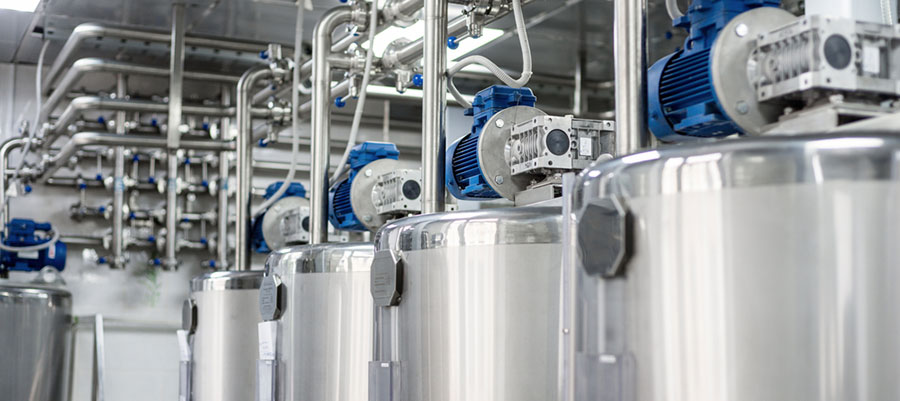Simple Ways to Reduce Water Consumption

Water conservation is a backburner concept for many industries. Though perhaps a familiar idea, proactively conserving resources, such as water, is often placed as last priority. Certain companies may even assume that conserving water wastesother company resources, like time, or disrupts processes requiring water usage. As we explored in a recent post, this assumption could not be further from the truth. Water conservation is important, worthwhile, and surprisingly simple.
In the content below, we demonstrate how simple reducing water consumption can be – with the proper nozzles. Flow capacity, maintenance, and cleaning processes are each explored in depth.
Choose a Nozzle with Correct Flow Capacity
Spray manifold or header assemblies must be properly designed to ensure maximum efficiency. Both systems utilize multiple full cone or flat fan nozzles for spraying. With a large amount of water used as it is, improperly designed assemblies can consume and waste copious amounts of resources.
Irregular spray patterns, indicating low performance, can be identified under brief inspection.
- Flat fans: indication of low performance include heavy flow in center of pattern or reduced coverage angle.
- Full cones: indication of low performance includes a higher concentration of liquid flowing towards the center of the pattern.
- Hollow cones: indication of lower performance includes streaks in the circular spray ring pattern and changes in flow rate.
Perform Proper Nozzle Maintenance
Proper spray nozzle maintenance enhances spray performance, extends nozzle life, and augments water conservation efforts. Five primary guidelines inform proper maintenance standards. We explore each guideline below:
1. Change nozzle material
Certain nozzles may be exposed to extreme temperatures, environments, or corrosive liquids that the equipment is not suited to withstand. If this is the case, consider switching to another nozzle material. Materials with a higher abrasion resistance ration last longer, withstanding harsh conditions. For example, tungsten carbide, PTFE, and PVDF work well for applications with corrosive chemicals. If your nozzles are underperforming due to improper materials, spray performance is greatly inhibited.
2. Add a line strainer or filter
Premature deterioration can also occur when the liquid source is filthy. Liquid can contain particulates, dirt, or minerals which can clog and deteriorate the orifice. Utilize a line or nozzle strainer to prevent the filth from entering and ruining the nozzle.
3. Use proper cleaning tools and care
Nozzle cleaning should be completed regularly and properly. Using the wrong cleaning equipment can damage the nozzle, resulting in poor spray performance and unnecessary water consumption. For example, only use plastic bristle brushes and wooden or plastic probes when cleaning nozzles. Wire brushes and metal knives can cause damage.
4. Detect irregular spray patterns
As mentioned under the section regarding correct flow capacity, irregular spray patterns should be identified and rectified.
5. Schedule routine maintenance
Nozzles should be inspected regularly. Incorporate routine maintenance into your standard operating procedure (SOP). Common inspection tasks include checking nozzle alignment, inspecting nozzle damage, checking spray pattern quality, and monitoring changes in flow rate. Nozzle damage takes many forms, including:
- Wear/ Erosion: this damage gradually occurs over time or, prematurely, as the orifice or internal passage becomes enlarged.
- Corrosion: this damage ensues due to chemical reaction initiated by the liquid being sprayed or an intense environment. Often, this results in a buildup of oxides or salt around the nozzle tip, near the orifice.
- High Temperature: as mentioned, high temperatures initiation the breakdown of nozzle material.
- Caking/ Bearding: build-up of material around the orifice is due to the evaporation of sprayed liquid, causing obstruction.
- Clogging: as discussed, clogging occurs when unwanted particles from sprayed liquid become lodged in the orifice and restrict incoming flow.
- Accidental Damage: accidental damage is physical damage to the nozzle or its orifice caused by dropping the nozzle during installation or creating abrasions with inappropriate cleaning tools.
- Improper Assembly: as with any piece of equipment, nozzles can be installed incorrectly. Accessories including caps, gaskets, O-rings, and valves are especially prone to incorrect assembly. Nozzle tips can often be inserted incorrectly into spray headers.
Automate Cleaning Processes
Are you cleaning manually or utilizing static spray devices? Both practices are red flags, inhibiting optimal performance. Manual cleaning is time-consuming, expensive, and dangerous. Static spray devices provide sufficient equipment cleaning for minor cleaning jobs, such as rinsing. However, static spray devices require more water to adequately clean than other nozzle varieties.
- Free Spinning Nozzles
Free-spinning nozzles are an excellent water conservation option, perfect for medium-sized, lightly soiled tanks. This nozzle requires less cleaning time, consumes less water, and ensures a clean tank – every time. How?
Free-spinning nozzles are powered by cleaning fluid, at low pressures, via specially positioned orifices. The nozzle sprays the sides of a tank with rapid repetition. Continuous impact effectively loosens the dirt, washing it off the tank surface. Operating at a low pressure allows for high cleaning performance while saving resources (such as water) and reducing high energy costs.
- Controlled Rotation
Similar to free-spinning nozzles, controlled rotation are extremely efficient, cutting down on resources while consistently cleaning equipment. Controlled rotation nozzles are excellent for more difficult cleaning requirements, including intensified soiling and bigger tanks. While controlled rotation nozzles are also driven by cleaning fluid, a turbine wheel with an internal gear is employed to control the rotation. By monitoring rotation, the speed remains at optimum range at a variety of pressures.
Droplets produced by controlled rotation nozzles are large, striking the tank wall at a higher speed. Such intense impact is especially important for major cleaning projects – while reducing water consumption.
An Efficient & Effective Nozzle Solution: Lechler
At Lechler, we provide optimally efficient spray solutions for a number of industries. However, we are more than simply a nozzle manufacturer – we provide custom engineered spray solutions, state of the art testing capabilities, fabrication and refurbishment programs.
Please do not hesitate to reach out to our team of experts today! Contact us at (800) 777-2926 or via our online contact form.